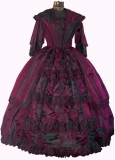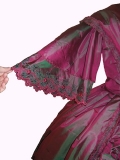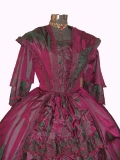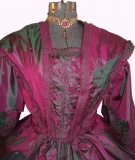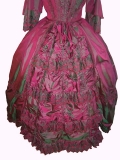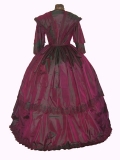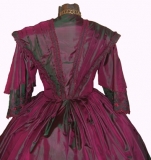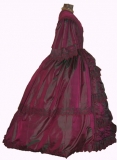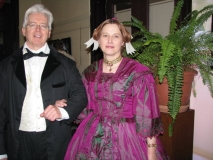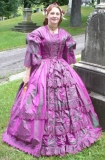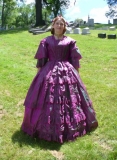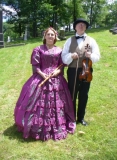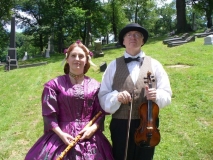This dress is one of my masterpieces. One advantage to getting older is that in many cases, you have more money. More money means better materials and tools for sewing period garments. This is the first dress I did with my Husqvarna Viking embroidery machines. It is made from “shot” silk in fustian pink and green. Shot silk is produced by weaving the fabric with one with two different colors for the horizontal and vertical threads. Aniline dyes were invented in 1856 by William Henry Perkin, and fuschine dye followed on it’s heels in 1859. Without this new dye, the color of this dress would not be possible. As you can imagine, this color became the latest new thing to have. It was expensive but most people could at least afford a ribbon or two in this exciting new color. The color and embroidery patterns were inspired by the famous 19th century song, “The Last Rose of Summer” by Thomas Moore. The basic dress is from Harriet Engler “Lydia“.
The style of this dress is late 1850’s to early 1860’s. The waist is at the natural waistline. It has a false “fichu” covering the bodice – the front is filled in by a shirred silk panel. The pagoda sleeves have two layers – one layer finished in an embroidered scallop, and the longer layer finished in the embroidered rose pattern. This patter is repeated in both layers of the skirt. The front insertion of the skirt is shirred silk and embroidered ruffles. The layers are trimmed with self fabric finished with scalloped embroidery. The dress is made up of 20 yards of fabric, and it took three weeks to run the various embroideries on two machines.
